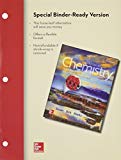
Concept explainers
(a)
Interpretation:
The determination of
(a)
Explanation of Solution
The given concentration of
Now,
Substitute
The hydronium ion concentration is less than
(b)
Interpretation:
The determination of
(b)
Explanation of Solution
The given concentration of
Now,
Substitute
The hydronium ion concentration is more than
(c)
Interpretation:
The determination of
(c)
Explanation of Solution
The given concentration of
Now,
Substitute
The hydronium ion concentration is more than
Want to see more full solutions like this?
Chapter 13 Solutions
Combo: Loose Leaf for Introduction to Chemistry with Connect Access Card Chemistry with LearnSmart 1 Semester Access Card
- Write equations that show NH3 as both a conjugate acid and a conjugate base.arrow_forwardConsider the following four solutions: (1) apple juice, pH 3.8, (2) pickle juice, pH 3.5, (3) carbonated beverage, pH 3.0, and (4) drinking water, pH 7.2. a. Which solution has the highest [H3O+]? b. Which solution has the highest [OH]? c. List the solutions in order of increasing acidity. d. List the solutions in order of decreasing basicity.arrow_forwardPure liquid ammonia ionizes in a manner similar to that of water. (a) Write the equilibrium for the autoionization of liquid ammonia. (b) Identify the conjugate acid form and the base form of the solvent. (c) Is NaNH2 an acid or a base in this solvent? (d) Is ammonium bromide an acid or a base in this solvent?arrow_forward
- Which of the following conditions indicate a basic solution? pOH = 11.21 pH = 9.42 (OH’] > IH+| |OH] > 1.0 X IO’7Marrow_forwardIndicate whether each of the following samples is acidic, basic, or neutral. a. butter, pH 6.1 b. lemon juice, pH 2.2 c. peach, pH 3.5 d. milk of magnesia, pH 10.5arrow_forwardConsider the following four biological solutions: (1) bile, pH 8.0, (2) blood, pH 7.4, (3) urine, pH 6.0, and (4) gastric juice, pH 1.6. a. Which solution has the lowest [H3O+]? b. Which solution has the lowest [OH]? c. List the solutions in order of decreasing acidity. d. List the solutions in order of increasing basicity.arrow_forward
- State whether 1 M solutions of the following salts in water are acidic, basic, or neutral. (a) K2CO3 (b) NH4F (c) LiH2PO4 (d) NaNO2(e) Ba(ClO4)2arrow_forwardDetermine whether aqueous solutions of the following salts are acidic, basic, or neutral: (a) Al(NO3)3. (b) RbI. (c) KHCO2. (d) CH3NH3Brarrow_forwardWrite a formula for the conjugate base formed when each of the following behaves as a Brnsted acid: a. HSO4 b. CH3NH3+ c. HClO4 d. NH4+ e. HClarrow_forward
- Chemistry: Matter and ChangeChemistryISBN:9780078746376Author:Dinah Zike, Laurel Dingrando, Nicholas Hainen, Cheryl WistromPublisher:Glencoe/McGraw-Hill School Pub Co
 Chemistry by OpenStax (2015-05-04)ChemistryISBN:9781938168390Author:Klaus Theopold, Richard H Langley, Paul Flowers, William R. Robinson, Mark BlaserPublisher:OpenStax
Chemistry by OpenStax (2015-05-04)ChemistryISBN:9781938168390Author:Klaus Theopold, Richard H Langley, Paul Flowers, William R. Robinson, Mark BlaserPublisher:OpenStax Chemistry: Principles and ReactionsChemistryISBN:9781305079373Author:William L. Masterton, Cecile N. HurleyPublisher:Cengage Learning
Chemistry: Principles and ReactionsChemistryISBN:9781305079373Author:William L. Masterton, Cecile N. HurleyPublisher:Cengage Learning  Introductory Chemistry: A FoundationChemistryISBN:9781285199030Author:Steven S. Zumdahl, Donald J. DeCostePublisher:Cengage Learning
Introductory Chemistry: A FoundationChemistryISBN:9781285199030Author:Steven S. Zumdahl, Donald J. DeCostePublisher:Cengage Learning Chemistry: Principles and PracticeChemistryISBN:9780534420123Author:Daniel L. Reger, Scott R. Goode, David W. Ball, Edward MercerPublisher:Cengage Learning
Chemistry: Principles and PracticeChemistryISBN:9780534420123Author:Daniel L. Reger, Scott R. Goode, David W. Ball, Edward MercerPublisher:Cengage Learning General, Organic, and Biological ChemistryChemistryISBN:9781285853918Author:H. Stephen StokerPublisher:Cengage Learning
General, Organic, and Biological ChemistryChemistryISBN:9781285853918Author:H. Stephen StokerPublisher:Cengage Learning





